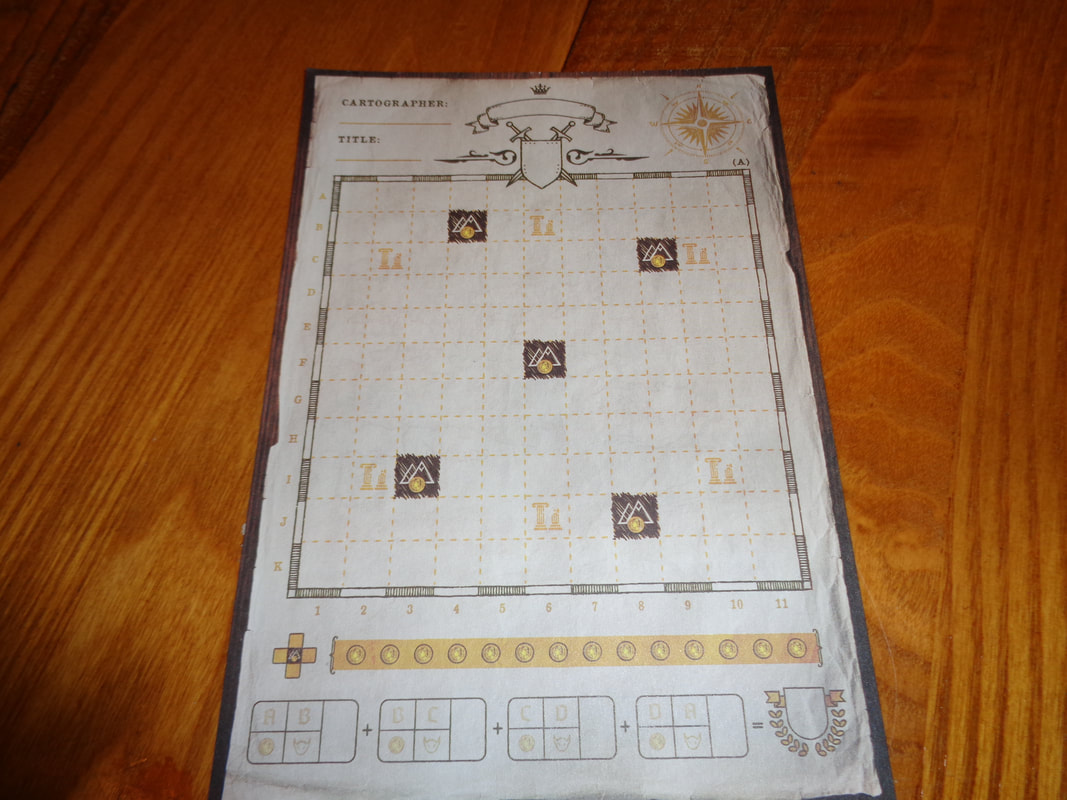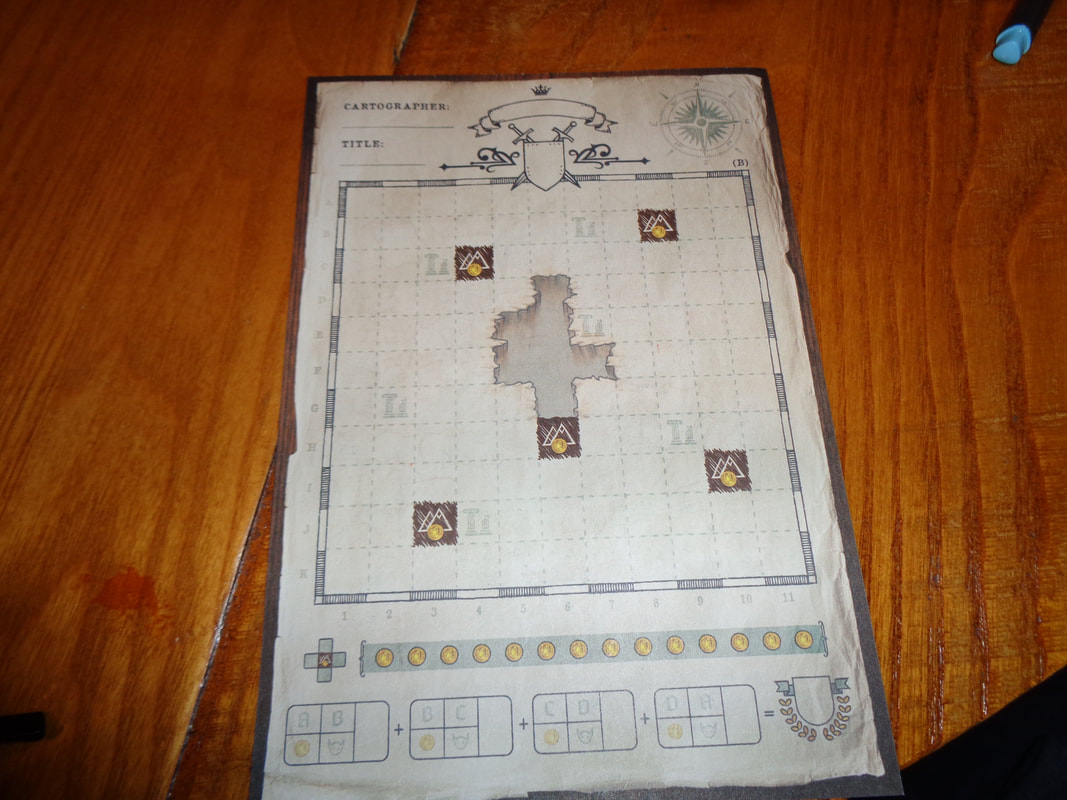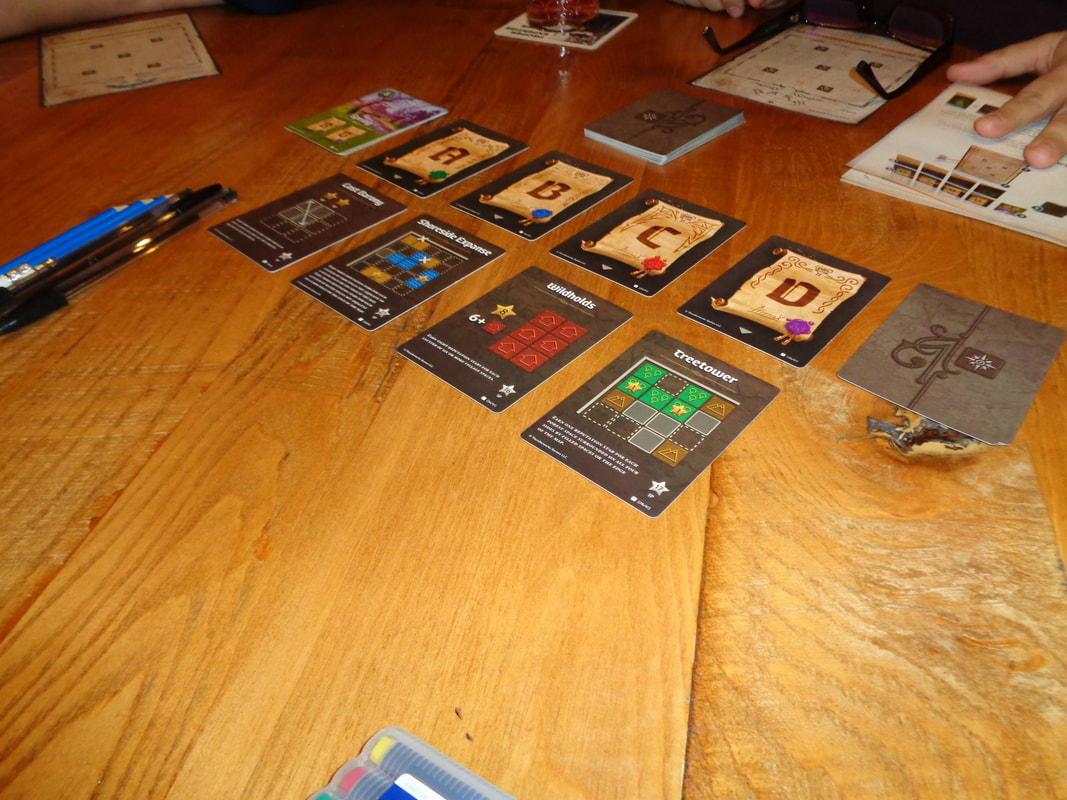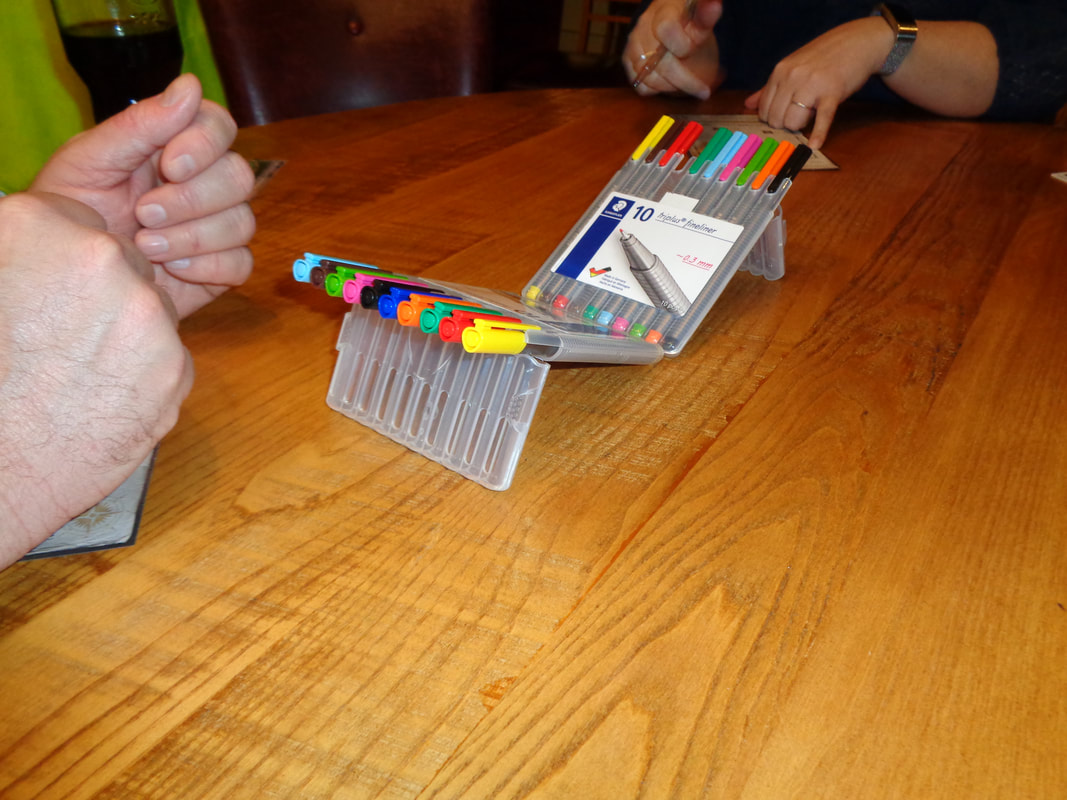|
17th March 2020 Tuesday has rolled around again and we're at 'The Sovereigns' with the Woking Gaming Club. The club members agreed that due to the threat of the Covid-19 virus, this would be the last get-together for the club until we were no longer required to socially-distance ourselves. The first game of the evening was 'Cartographers'. Do you fancy getting out and about, doing a bit of exploring? Perhaps finding a forest or two, or even a river? Then this game may be for you. That's right, in these days of self isolation and being stuck at home; we played a game about going outside! Cartographers is a style of game I've yet to play called 'roll and write'. What's in a game?
The only bugbear with the game is the pad of blank maps, which you tear out and give to each player. Even though 100 sheets enough for a lot of games, the idea of it makes me wince! If you do run out of sheets however, you can download and print extras from the website. Special note! Dave, the game's owner had the wisdom and foresight to also purchase a couple of sets of coloured fine line markers to use with the game (More about that below.). How's it play? First there's setup.
Play begins by turning over an exploration card.
Scoring occurs at the end of every season and is broken down as follows (As well as end of round actions.):
Once the score for the winter season has been calculated, the score for all 4 seasons is tallied. Highest score wins. Overall
Cartographers is a fun and interesting game. Interesting because of how the scoring works, it gives players short term and long term goals. Not only are there 4 scoring objectives, each objective is scored twice and they are scored asymmetrically. Objective 'A' is scored in rounds 1 & 4. So working towards it in rounds 1 & 4 will earn a player points. Objective 'A' scores no points in rounds 2 & 3, however working towards objective 'A' in rounds 2 & 3 can pay dividends when it's scored again in round 4. This may mean neglecting other scoring opportunities though. Objective 'B' on the other hand, scores in rounds 1 & 2, after that it's worthless. So to make the most of this scoring opportunity, players will have to concentrate on it for the first half of the game. All of this makes players think about short, long and mid term goals and how to maximise scoring opportunities. Additionally, players cannot predict what terrain/shapes will appear if at all or the order they appear. Nor can they predict when ambush cards will appear. Players also need to be flexible and be able to change their plans. This culminates in giving players lots of factors to consider and decisions to make - which is good. Another interesting thing about Cartographer is the number of players it supports. It's essentially only limited by the drawing implements/time required. You could use the entire pad and play with 100 people at once if you had the time/space/pencils! There is theoretically no downtime as everyone draws their shapes at the same time. I say theoretically, because they'll always be that player that takes too and wants to draw in too much detail! 'Do you really need to draw the chimneys on the houses in your village. What! Now you're doing the smoke too!'. You know what I mean. The addition of the coloured markers - whilst an extra expense added quite a lot to the experience. I imagine using the pencils a little duller. It's a shame they couldn't include coloured pencils or something along those lines. Obviously costs need to be kept down though. Even so, I found it a good game and would play it again.
0 Comments
Leave a Reply. |
AuthorI play, I paint. Archives
March 2024
Categories
All
|





 RSS Feed
RSS Feed
